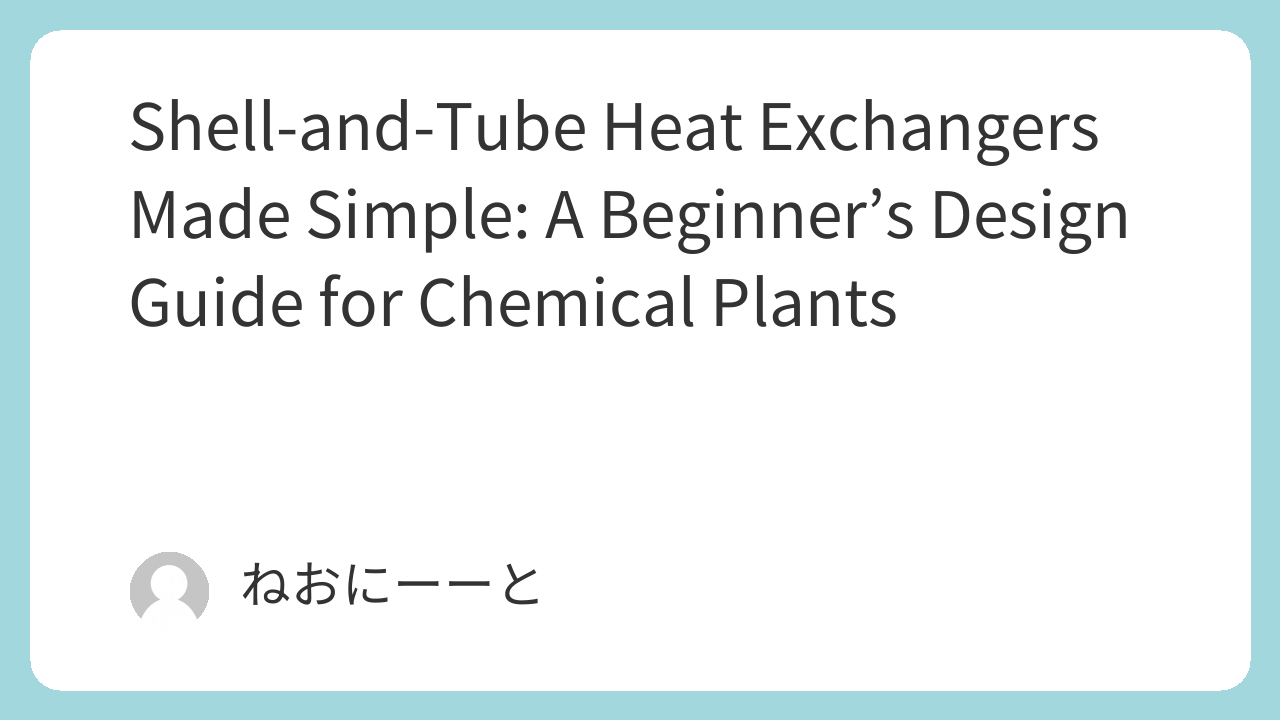Shell-and-tube heat exchangers are a classic piece of equipment in chemical plants—and a favorite among mechanical engineers. Whether you’re designing your first exchanger or reviewing one from a vendor, understanding the basics is essential.
Even with software or handbooks, things can get confusing fast. This article walks you through the core concepts needed to design a condenser-type shell-and-tube heat exchanger, especially for batch-type chemical plants.
Is the Shell-and-Tube Heat Exchanger the Best Choice for Batch Plants? A Practical Selection Guide
Shell-and-Tube Heat Exchangers Made Simple: A Beginner’s Design Guide for Chemical Plants
1. Focus on Fixed-Tube Designs
In batch chemical plants, fixed-tube sheet heat exchangers dominate—often over 99% of installations. They’re space-saving, reliable, and offer excellent sealing performance.
Why fixed-tube?
- Minimal thermal expansion concerns
- Limited cleaning required on the shell side
- Compact layout
- No sliding parts = better sealing
Even though floating-head designs allow for better maintenance access, fixed-tube setups are more than sufficient for most batch processes.
2. Tube Side vs. Shell Side: Where’s the Process?
In condenser-type exchangers, choosing tube-side vs. shell-side cooling depends on:
- Materials compatibility
- Cleanability
- Required heat transfer rate
Generally, corrosive or special materials (like glass-lined or carbon steel) go on the tube side due to better cleanability and cost considerations.
3. Key Tube-Side Design Factors
- Material
Choose based on process fluid. Exotic materials mean tube-side duty is fixed early. - Flow velocity
Critical for heat transfer coefficient (U). Calculated from Q and pipe dimensions. - Number of passes
More passes = higher velocity, but exotic materials like glass-lined steel limit you to one pass.
For condensers, single-pass tubes are standard. Multi-pass setups often underperform due to gas-liquid separation issues and pressure drops.
4. Shell-Side Design Basics
- Material
If the shell handles utilities, mild steel is usually fine. If process fluid runs through the shell, use stainless or equivalent. - Flow velocity
Important for liquid-side performance. Gas-side condensation doesn’t rely on flow speed as much. - Baffle spacing
Shorter = higher velocity = better heat transfer—but also higher pressure loss. - Baffle cut
Typically 25%. Orientation (horizontal vs. vertical) has minimal real-world impact, though vertical cuts are often preferred to avoid pooling of dirty utility liquids.
5. What About Cleanability?
Cleanability is often overstated in textbooks. In real-world batch plants:
- Processes are usually mild
- Equipment is reused across multiple chemicals
- Corrosion-resistant materials are standard
- Cleaning challenges are mitigated through design standardization or routine replacement
Most of the time, tube-side condensation with utility fluid in the shell is the default. Designing around exceptions is rare and usually not cost-effective.
✅ Conclusion
Shell-and-tube heat exchangers, especially fixed-tube condenser types, are foundational to batch chemical plants. By understanding a few critical parameters—material, flow velocity, and layout—you can design effective, practical systems.
While design handbooks and software help, grasping the logic behind choices ensures better judgment and troubleshooting.

Comments